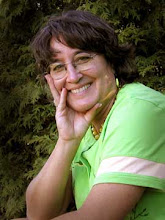September 6. Summerland. On Tahoma’s east side.
I wake just as the sun opens the day and the moon sets behind the peak. Fellow campers lend me binoculars to see mountain climbers resting below the summit. So I did see headlamps in the morning’s wee hours.
The hike to Panhandle Gap feels different. The light is weaker. There are no goats. At the Gap I take a self-portrait with
I think of the Cosmic Christ and what Matthew Fox says of him. This Catholic theologian was silenced by the
The Cosmic Christ is Cosmic Wisdom, he says, and “is by no means a Christian invention.” There is a path to this cosmic wisdom, the “awakening of heart knowledge and of entering the darkness that is called mysticism.” The result is metanoia, change of heart. It creates compassion and justice, healing and celebration. It is deeply ecumenical. Creation theology says that we mustn’t delay the experience of heaven in anticipation of rewards in the afterlife. We are called to enjoy heaven here. Joy, in the gift of creation and the gifts of ourselves and our loved ones, is our birthright. Oh, what damage
Indian Bar. Did the Indians come here to gather huckleberries? I wonder about their influence here. I remember the tale of the Indian Sluiskin who tried to persuade General Hazard Stevens and Philemon Van Trump not to climb the summit of Tahoma, for fear of the evil Tamanawas (spirits) that belched fire and caused avalanches. The climbers spent a nauseating night in the sulfurous summit steam caves, and when they returned the Indian mistook them for ghosts.
Native peoples have traditionally been connected to creation. They affirmed these connections with ritual, singing, drumming, ceremony. I wonder about the
This is the first place I have encountered huckleberries, low-growing bushes with powder-blue fruit at the peak of ripeness. I have been told there are over a dozen varieties of huckleberries. I see four kinds on this trail, and my favorite is the tall bush with large black fruit. My hands are purple from the harvest; I have never had huckleberries so perfect. My usual autumn hikes are three to four weeks later, when the leaves are stunningly crimson, but the fruit is mushy.
It is warm and the insects go about the business of living. I pick up a sluggish grasshopper in my path and see “it” is a mating pair. Winter is just weeks away, and grasshoppers are making babies!
The stone shelter at Indian Bar has the most picturesque setting of any in the park. The river bar is broad and many-channeled; mountain goats graze the slope; snowy ridges sweep around me and obscure the summit. The meadows are thick with the last flowers and seed heads; two weeks earlier it would have been riotous color. Bear sign is everywhere, huckleberry blue, but no one sees a bear here.
Four couples are in camp this afternoon. A lady from
There has been a lenticular cloud above Tahoma all day, and one shaped over
I find a goat track up a mountain, high above the shelter. I unwisely choose a steep course; I need my hands to make it up. On top, a ring of campfire rocks is overgrown with partridge foot. It is likely no human has been here in years. Tahoma’s summit is visible and I know the spirit guides have led me to this place. The goats will come at dusk; their tracks are everywhere. If it rains I will not make it down to the shelter because I cannot follow this trail in the dark. I will have to make a pup tent with my tarp if it does. I sleep with one eye on the sky.
It is a powerful feeling to be alone at night, with stars and darkness for company. I want to feel the entirety of the night, the passage of stars and tread of the moon, to see Tahoma change from a flat, minty blue monolith to a sharply delineated sculpture of ice chips, to watch the thin clouds and wonder what they portend. Alone under such a sky, there is the sense that Somebody wants to talk to me and I’d best be ready.
The moon rises behind the eastern crags, full and with its praying Indian. The Indian is hard to see without binoculars. He sits with bent head, as if in the sweat lodge, feathers arching over. He fills the whole visage of the moon.
Finally I sleep. Precisely at midnight I awaken with a yell. A she-goat gallops through camp, then stops, silhouetted in moonlight. Her bleats are the sound of grass stretched between the fingers and blown like a whistle. “It’s okay, it’s okay,” I whisper, more to soothe my own nerves than hers. As I speak she trots directly toward me. Alarmed, I wave my arms and say, louder, “I’m here. Yes, I’m really here.” She stops, turns, and runs away. I do not know why she came toward me. I should have kept still; perhaps she had something to say to me.
To an Indian, her visitation might have been significant. Traditionally, Native peoples would seek spirit guides on a vision quest. There would be a sign: a peculiar visit by an animal, a thunderstorm, a sudden wind. The spirit guide could be an eagle or bear, a beetle or rock. A Plains Indian would seek out a mountaintop for this experience, “crying for a vision.” (Hanblecheyapi in Sioux.) A Northwest Salish quester might spend the night in a graveyard or beside a lake known for its malevolent spirits. Somehow, somewhere, a sign would come. Power would be bestowed. Hunter. Warrior. Healer. Artist.
I wonder what the mountain goat means?
I am awake more than I am asleep tonight. The moon travels slowly. Wind changes from east to south; fish scale clouds fill the sky. At dawn the moon has a ring. Something is coming.


No comments:
Post a Comment